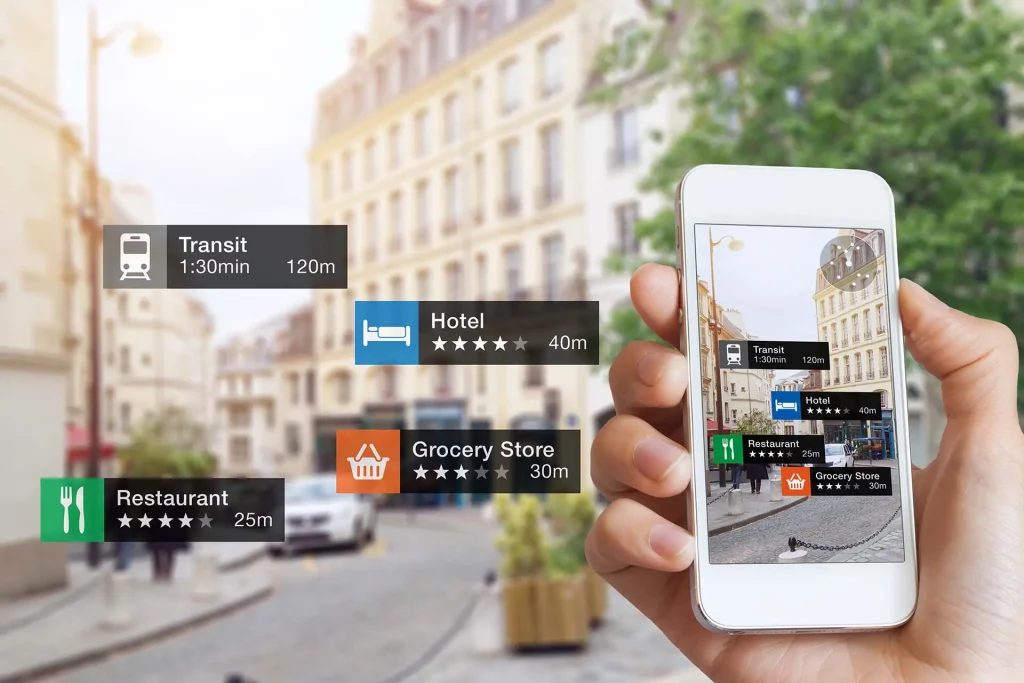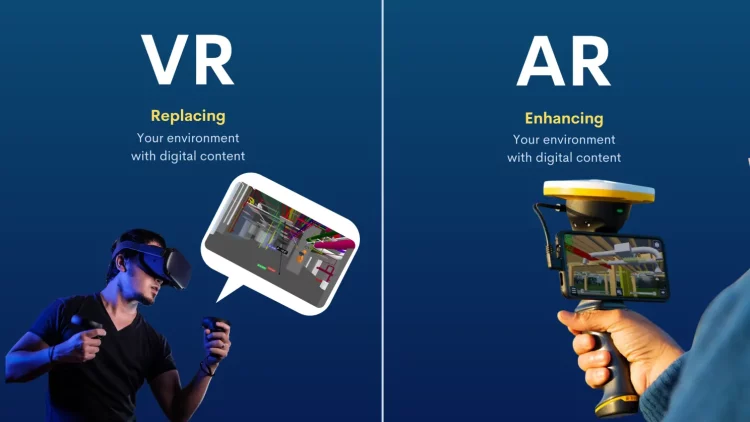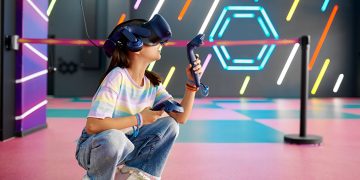Augmented reality (AR) is no longer confined to entertainment or education. Its integration into healthcare is redefining how we diagnose, treat, and care for patients. From surgical assistance to rehabilitation, AR provides a bridge between virtual precision and human compassion, enhancing both outcomes and patient experiences.
AR in Surgery: Precision and Safety
Surgical procedures require exacting precision, and AR offers surgeons real-time insights that were previously impossible. In neurosurgery, for example, AR headsets project 3D holograms of a patient’s brain directly onto the surgeon’s field of view, highlighting critical structures such as blood vessels and tumors.
During a recent case at a major hospital, a neurosurgeon prepared to remove a deep-seated tumor. The AR system overlaid MRI data and CT scans onto the patient’s head, enabling exact localization and minimizing collateral damage. Surgeons could adjust their approach mid-operation, reducing operation time and enhancing patient safety.
AR also improves training. Medical students observe procedures through AR-enhanced headsets, seeing the surgeon’s view alongside critical data. This immersive experience provides experiential learning without the risks associated with live surgery, accelerating skill acquisition and confidence.
Rehabilitation and Physical Therapy
Beyond the operating room, AR is transforming rehabilitation. Patients recovering from strokes, injuries, or orthopedic surgeries benefit from interactive AR exercises that adapt to their progress.
Consider a patient undergoing post-stroke rehabilitation. AR systems project virtual targets and tasks into the patient’s environment, requiring specific movements that restore motor function. Sensors track performance in real-time, providing feedback and encouragement. This gamified approach increases engagement and adherence, significantly improving recovery outcomes compared to traditional therapy.
AR also allows remote therapy. Patients in rural areas can receive guided rehabilitation sessions, with therapists monitoring performance virtually and adjusting exercises as needed. This democratization of healthcare reduces geographic and socioeconomic barriers.
Mental Health and Cognitive Therapy
AR applications extend to mental health. Patients with anxiety, phobias, or post-traumatic stress disorder (PTSD) can engage in controlled exposure therapy within safe virtual overlays of real environments.
For instance, a patient fearful of public speaking can practice presentations in a virtual audience projected in their living room. The therapist can modulate audience reactions in real-time, gradually increasing the challenge to build confidence. This approach allows patients to confront fears in realistic yet controlled scenarios, enhancing coping mechanisms without overwhelming stress.
Cognitive therapy benefits as well. AR overlays can guide memory exercises, attention training, and problem-solving tasks for patients with dementia or cognitive decline, promoting mental stimulation and quality of life.
Medical Education and Training
AR is revolutionizing medical education. Students and trainees interact with holographic patient models, practicing diagnosis, procedures, and emergency response without risk.
A cardiology student can explore a 3D beating heart, manipulate blood flow simulations, and observe physiological reactions to interventions. These immersive experiences enhance understanding of anatomy, physiology, and pathology in ways that textbooks cannot replicate.
AR also supports interprofessional collaboration. Trainees in nursing, radiology, and surgery can participate in coordinated simulations, learning communication, decision-making, and teamwork skills in complex scenarios.
Patient Engagement and Understanding
AR enhances patient comprehension and involvement in healthcare decisions. During consultations, AR projections illustrate surgical plans, medication effects, or disease progression, helping patients visualize abstract concepts.
For example, a patient scheduled for orthopedic surgery can see a 3D model of their joint, the planned intervention, and expected outcomes. This clarity reduces anxiety, fosters informed consent, and strengthens trust between patient and provider.
Hospitals increasingly integrate AR into patient-facing apps. Patients can navigate complex facilities with AR wayfinding, access post-operative instructions interactively, and monitor vital signs through augmented dashboards. This empowers patients to take active roles in their care.

Challenges and Ethical Considerations
Despite its promise, AR in healthcare presents challenges:
- Technical Limitations: High costs, device calibration, and integration with existing hospital systems can hinder deployment.
- Data Privacy and Security: AR systems often access sensitive patient data, requiring robust encryption and compliance with health regulations.
- Human Factors: Overreliance on AR may affect clinical judgment. Systems must support, not replace, human expertise.
- Accessibility: Ensuring equitable access across hospitals, regions, and socio-economic groups is critical to avoid widening disparities.
Ethically, patient consent, transparency, and safety must guide AR integration. Technology should enhance empathy and care, not create distance or dependency.
Case Study: AR in a Multidisciplinary Hospital
At a metropolitan hospital, AR is deployed across multiple departments. In surgery, real-time overlays improve precision. In rehabilitation, gamified exercises accelerate recovery. In mental health, controlled AR environments facilitate therapy.
Data shows measurable outcomes: reduced surgical errors, faster recovery times, improved patient satisfaction, and higher therapy adherence. Healthcare professionals report increased confidence and efficiency, while patients experience a deeper understanding of their conditions and treatments.
The hospital’s experience demonstrates that AR is not a standalone technology—it is a facilitator of human-centered care, amplifying both technical skill and compassionate engagement.
Future Directions
AR in healthcare will continue to expand in several directions:
- Integration with AI: Intelligent AR systems can analyze patient data in real-time, guiding decisions and suggesting interventions.
- Telemedicine Enhancement: AR will allow remote specialists to assist in procedures, training, or consultations with unprecedented realism.
- Wearable AR Devices: Lightweight, comfortable headsets or glasses will enable continuous monitoring, assistance, and guidance in daily activities.
- Augmented Diagnostics: AR overlays on imaging scans, lab results, and patient records will improve interpretation and collaborative decision-making.
- Patient-Centered Augmentation: AR will support lifestyle management, chronic disease monitoring, and preventive care through interactive guidance and feedback.
Societal Impact
AR reshapes the healthcare ecosystem, not only improving outcomes but also affecting workforce dynamics. Clinicians must adapt to new tools, balancing augmented guidance with professional judgment. Patients gain agency and understanding, fostering trust and engagement.
Economically, AR can reduce procedural errors, shorten hospital stays, and optimize resource utilization. Socially, it democratizes expertise, allowing knowledge and guidance to extend beyond hospital walls into homes, schools, and communities.
Psychologically, AR-supported therapy and education enhance confidence, adherence, and quality of life. Patients feel seen, understood, and empowered, highlighting that technology’s ultimate value lies in human well-being.
Conclusion: AR as a Healthcare Partner
Augmented reality transforms medicine from a reactive, observation-based practice into a proactive, interactive, and patient-centered experience. By combining digital precision with human empathy, AR enhances surgical accuracy, accelerates rehabilitation, supports mental health, improves education, and empowers patients.
The human-AR relationship in healthcare is one of collaboration. AR extends human capabilities, informs decisions, and enriches experiences without replacing human care.
As AR matures, its integration into healthcare will define the next era of medical practice—one where technology amplifies human skill, understanding, and compassion, creating a future where health is not only treated but also experienced in richer, more informed, and more interactive ways.












































